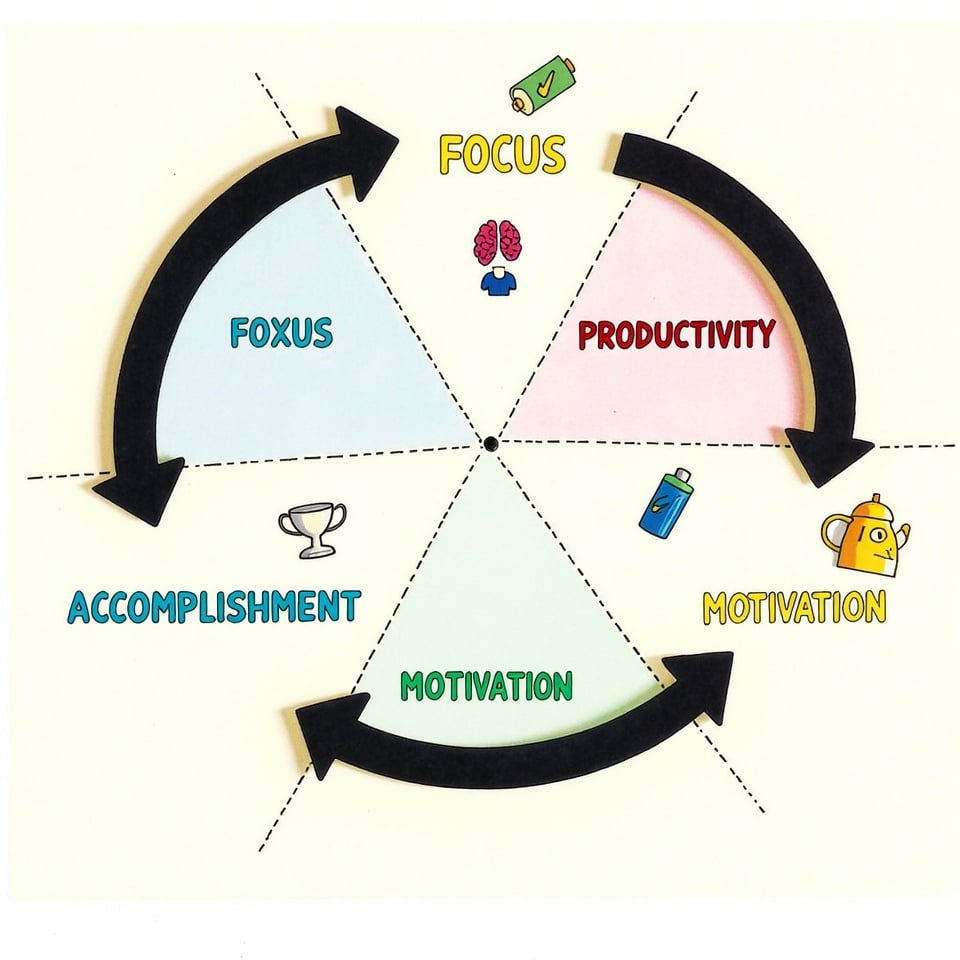Coordinating conjunctions connect words, phrases, and clauses in English sentences. These seven words — For, And, Nor, But, Or, Yet, So — form the acronym FANBOYS, and they’re essential for clear writing and speaking.
Each FANBOYS conjunction serves a specific purpose: joining similar ideas, showing contrast, or expressing cause and effect. When used correctly, they help create precise, well-structured sentences that express your thoughts clearly.
In this guide, I’ll explain how each coordinating conjunction works and show you practical ways to use them in your writing.
What Are Coordinating Conjunctions?
A coordinating conjunction is a word that connects equal parts of a sentence, including independent clauses, words, or phrases of the same type.
How Do Coordinating Conjunctions Work?
These conjunctions link:
- Two complete sentences
- Similar words (nouns, verbs, adjectives)
- Matching phrases
The Seven Coordinating Conjunctions and Their Uses:
F – For (shows reason)
A – And (adds ideas)
N – Nor (adds negative ideas)
B – But (shows contrast)
O – Or (shows choices)
Y – Yet (shows contrast)
S – So (shows result)
Here are a few common examples:
- I wanted to go to the party, but I had work to do.
- The coffee was hot and fresh.
- She can take the bus or drive her car.
- The movie was long, yet interesting.
- Tom was tired, so he went to bed early.
- I didn’t eat breakfast, nor did I have lunch.
- He studied hard, for he wanted to pass the test.
Understanding Each FANBOYS Conjunction
Let’s break down each coordinating conjunction with clear examples that show how they work in everyday writing.
For (Explaining Reasons and Causes)
This conjunction helps explain why something happened. Think of it as giving a reason.
Example: I couldn’t focus on my work, for the noise outside was too loud.
And (Adding Related Ideas)
I use “and” to connect similar thoughts or items that go together naturally.
Example:
She packed her laptop and charger for the meeting.
The sun was shining, and the birds were singing.
Nor (Adding Negative Alternatives)
When you want to add another negative idea, “nor” is your go-to conjunction.
Example: The store didn’t accept credit cards, nor did they take checks.
But (Showing Contrast)
“But” helps show differences between two ideas.
Example: The ticket was expensive, but the concert was worth every penny.
Or (Presenting Alternatives)
Use “or” when giving choices or showing different possibilities.
Example: We can order pizza, or we can cook dinner at home.
Yet (Expressing Unexpected Results)
“Yet” works like “but” but adds an element of surprise.
Example: He never studied, yet he passed all his exams.
So (Indicating Consequences)
This shows what happened because of something else.
Example: The battery died, so I had to buy a new phone.
Essential Grammar Rules for Using FANBOYS
Let me share the key rules that’ll help you use FANBOYS correctly every time.
When Do You Need a Comma with FANBOYS?
Use a comma before FANBOYS when connecting two complete sentences (independent clauses).
✅ I love pizza, and I enjoy pasta.
❌ I love pizza and pasta. (No comma needed — not two complete sentences)
Independent vs. Dependent Clauses
Independent Clause can stand alone as a complete sentence
- The movie ended.
- The crowd went home.
Combined: The movie ended, and the crowd went home.
Dependent Clause can’t stand alone as a complete sentence
- because it was late
- when the sun sets
Combined: The movie ended because it was late. (Don’t use FANBOYS here)
Common Mistakes to Avoid:
- Adding unnecessary commas
Wrong: I like dogs, and cats.
Right: I like dogs and cats.
- Missing required commas
Wrong: The sun was setting but we stayed at the beach.
Right: The sun was setting, but we stayed at the beach.
- Using FANBOYS with dependent clauses
Wrong: We left, for it was late.
Better: We left because it was late.
PS: Remember this simple trick — if both parts can be complete sentences on their own, use a comma before FANBOYS.
Mastering FANBOYS in Academic Writing
I want to show you how FANBOYS can make your academic writing clearer and more professional.
Formal vs. Informal Usage
Formal Writing:
- “Therefore” instead of “so”
- “However” instead of “but”
- “Furthermore” instead of “and”
Example:
Informal: The study was small, but it showed clear results.
Formal: The study was limited in scope; however, it yielded significant results.
Strengthening Your Arguments
FANBOYS help build stronger arguments by:
- Connecting related evidence
Example: The research showed positive results, and the follow-up studies confirmed these findings.
- Showing contrast
Example: Previous studies suggested different outcomes, yet our findings indicate new possibilities.
- Building logical flow
Example: The first experiment failed, so we adjusted our approach.
Maintaining Flow Between Ideas
Use FANBOYS to:
- Link similar thoughts
Example: The data supported our hypothesis, and the methodology proved reliable.
- Show cause and effect
Example: The sample size was too small, for we had limited resources.
- Present alternatives
Example: Researchers must either increase the sample size, or they should narrow their focus.
Tip: Don’t start sentences with FANBOYS in academic writing. Instead, use more formal transitions like “additionally,” “nevertheless,” or “consequently.
Common Mistakes and How to Fix Them
Here’s how to catch and fix the most common FANBOYS mistakes.
Comma Splices
What it is: Using only a comma to join two complete sentences
Wrong: The sun was setting, the birds flew home.
Fix it with FANBOYS: The sun was setting, and the birds flew home.
Alternative fix: The sun was setting. The birds flew home.
Run-on Sentences
What it is: Joining complete sentences without proper punctuation or FANBOYS
Wrong: I went to the store I bought milk.
Fix it three ways:
- Add FANBOYS: I went to the store, and I bought milk.
- Use a period: I went to the store. I bought milk.
- Use a semicolon: I went to the store; I bought milk.
Overusing Specific Conjunctions
The Problem: Using “and” or “but” too much makes writing repetitive.
Before: I went to the store, and I bought milk, and I got bread, and I picked up eggs.
Better: I went to the store to buy milk, bread, and eggs.
Quick Fixes:
- Vary your FANBOYS choices
- Break long sentences into shorter ones
- Use different transition words when possible
Tip: If you find yourself using the same FANBOYS more than twice in a paragraph, try restructuring your sentences.
FANBOYS in Different Writing Styles
Writers use FANBOYS differently across various styles and formats. These coordinating conjunctions help create the right tone and clarity for each type of writing.
Here’s how FANBOYS work in different contexts.
Creative Writing Applications
FANBOYS shine in creative writing by adding style and emotion to your stories. Think of them as the spices that make your writing more flavorful — they help build tension, create atmosphere, and develop characters.
In creative pieces, FANBOYS help you:
- Connect related actions: The door creaked open, and shadows danced across the wall
- Build suspense: She reached for the handle, but something stopped her
- Show character thoughts: I wanted to run, for danger lurked nearby
Creative writers often break traditional FANBOYS rules to:
- Start sentences with conjunctions for effect
- Create rhythm and flow
- Add dramatic pauses
Here’s a creative example:
Plain: The rain fell. The thunder boomed. The lightning flashed.
With FANBOYS: The rain fell, and thunder boomed, yet the lightning flashed brightest of all.
Tip: In creative writing, FANBOYS help you paint pictures with words — use them to make your scenes come alive.
Business Writing Usage
Business writing needs clarity and precision. FANBOYS help connect ideas professionally without adding unnecessary words.
Key uses in business documents:
- Linking related points: The market expanded, so we increased production
- Showing choices: Choose either the basic plan or the premium package
- Adding important details: We completed the project, and client feedback was positive
Tips for business FANBOYS:
- Keep sentences short
- Use “therefore” instead of “so” in formal documents
- Avoid starting sentences with FANBOYS in formal reports
Technical Writing Best Practices
Technical writing demands precision and simplicity. FANBOYS help connect technical information clearly and logically.
Best uses in technical documents:
- Linking steps: Install the software, and restart your computer
- Showing options: Users can select manual mode or automatic mode
- Explaining results: The battery died, for it wasn’t charged properly
Technical writing rules:
- Use one FANBOYS per sentence
- Keep instructions clear and direct
- Choose the most precise conjunction
Tip: In both business and technical writing, less is more. Use FANBOYS only when they truly clarify your message.
FAQs About FANBOYS Coordinating Conjunctions
What is a fanboy conjunction example?
A FANBOYS conjunction example is “I love pizza, but I’m allergic to cheese.” Here, “but” connects two related ideas while showing contrast between them.
What are 10 examples of coordinating conjunctions in sentences?
- I love coffee, for it keeps me alert.
- I bought apples, and I made a pie.
- She doesn’t like tea, nor does she drink coffee.
- The movie was expensive, but it was worth it.
- You can study now, or you can play later.
- He seems friendly, yet he has few friends.
- It started raining, so I brought an umbrella.
- The dog barked, and the cat ran away.
- We must leave now, or we’ll miss the train.
- She practiced daily, for she wanted to improve.
What are the 7 words for FANBOYS?
The 7 FANBOYS words are:
- For (showing reason)
- And (adding information)
- Nor (adding negatives)
- But (showing contrast)
- Or (showing choice)
- Yet (showing surprise)
- So (showing result)
What is the FANBOYS formula?
The FANBOYS formula is: Independent Clause + Comma + FANBOYS + Independent Clause.
Example: “I went to the store, and I bought milk.”







